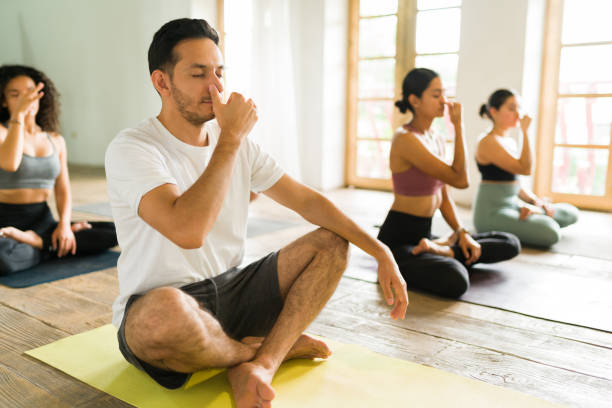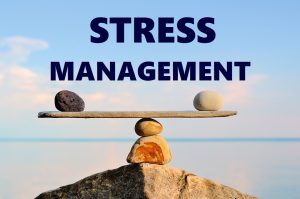Relaxation breathing exercises can help both mind and body unwind, ease anxiety and increase focus. They’re useful during times of tension or as part of daily routine to boost energy and facilitate restful sleep.
Sit or lie down and press the tip of your tongue against the tissue behind your front teeth, before inhaling through your nose for four seconds and exhaling slowly for seven counts while making sure your exhale lasts longer than your inhale.
Deep Breathing
Breathing exercises and relaxation techniques are invaluable resources for anyone seeking to reduce stress levels. While you can perform them anywhere at any time, practicing these regularly will yield maximum benefit.
Most people breathe shallowly into their chest, which can increase anxiety and reduce energy. With this technique, you’ll learn to breathe deeper into the belly — a sign of relaxation in the body. Begin by sitting or lying down on a supportive chair/floor surface. Place one hand on either chest/belly; notice how your torso moves differently as you breathe in and out; progressing up to breathing five times without stopping before stopping completely.
Rhythmic, deep breaths can activate the parasympathetic nervous system to regulate our fight-or-flight response and ease anxiety by lowering heart rate and blood pressure. They’re especially helpful before attending stressful or anxious events like doctor’s appointments; try practicing this breathing exercise at least twice daily for at least 5-10 minutes until it feels natural to you; add muscle relaxation exercises – like clenching your hands tightly for several seconds then relaxing them again – to further boost its effects.
Counting Breaths
Counting breaths can be an effective way to soothe both mind and body. Doing this activates the parasympathetic nervous system, which slows heart rate while relaxing muscles – both effective ways of relieving anxiety. Furthermore, counting can also help improve sleeping quality at night as well as help people overcome procrastination more efficiently.
Breathing exercises involve inhaling and exhaling deeply. This simple yet powerful relaxation technique can help prepare you for important events or simply ease feelings of anxiety or stress. You can practice it anywhere at any time; even while sitting or lying on a bed or yoga mat. Daily practice of this simple relaxation exercise is recommended to reap maximum results.
There are various breathing exercises and techniques, the most popular ones being alternate nostril breathing (Nadi Shodhana), Lion’s Breath, Pursed Lip Breathing and Equal Breathing. Although some have been scientifically tested to help reduce stress levels, others remain experimental; if unsure which breathing practice would best fit your needs consult your healthcare provider or speak to someone experienced with breathing practices like respiratory therapy or yoga who specializes in breathing exercises for advice. Shallow rapid breathing could indicate an underlying health condition so working with someone knowledgeable with breathing practices would also help.
Focusing Breaths
How we breathe has an immense effect on everything from our heart rate to how we feel. Indeed, controlling our breath can combat stress, ease pain and even alter brain chemistry to make us mentally sharper (Jafari et al. 2018).
Breathing exercises are an effective relaxation tool that can help you fall asleep faster. However, it’s important to remember that using breathing techniques requires practice and should be employed on an ongoing basis rather than as a one-off stress management technique.
Focused breathing involves concentrating solely on the movement of air entering and leaving your lungs, clearing away all other thoughts as you breathe. This exercise can be performed while sitting or lying down and is an excellent way to ease anxiety or depression symptoms.
Progressive muscle relaxation is another popular breathing technique, which works by gradually tightening and relaxing different groups of muscles one at a time. To do this exercise properly, begin at your feet and work your way up towards your head; hold each group tense for 10-20 seconds before exhaling to relax them before moving on to the next group – repeat until all muscles have been completely relaxed.
For an in-depth breathing meditation session, consider practicing Bhramari Pranayama – an ancient yoga technique which works to control heart rate. To do it properly, sit comfortably and place both thumbs at the corners of your ears with index fingers above eyebrows while closing eyes and producing a buzzing or humming noise while inhaling and exhaling before producing an audible sigh when exhaling.
Diaphragmatic Breathing
This breathing technique can increase lung capacity, improve GI function and build immunity. Additionally, it may reduce stress levels, promote relaxation and support digestion – particularly beneficial for those suffering from COPD, asthma and other breathing conditions.
The diaphragm is a large dome-shaped muscle located below your heart and lungs and above your stomach and intestines. When breathing in, this muscle flattens to allow air into your lungs before returning back into its regular, dome shape upon exhalation. This efficient method of breathing allows your lungs to fill more fully with each breath as blood flow increases helping your body distribute oxygen efficiently throughout its systems.
Diaphragmatic breathing requires keeping the chest still. To practice this, lie on a comfortable surface and place one hand on your chest and one on your belly, breathing in slowly while visualizing that one hand rises with each breath as you exhale, then inhale again while visualizing that hand drop when exhaling; repeat until you feel that your lungs have been adequately filled and you have reached a relaxed state.
Starting off slowly is key – starting by practicing this exercise for 5-10 minutes twice daily while sitting comfortably. As people become accustomed to it they can gradually try practicing it in various positions such as sitting or standing.




